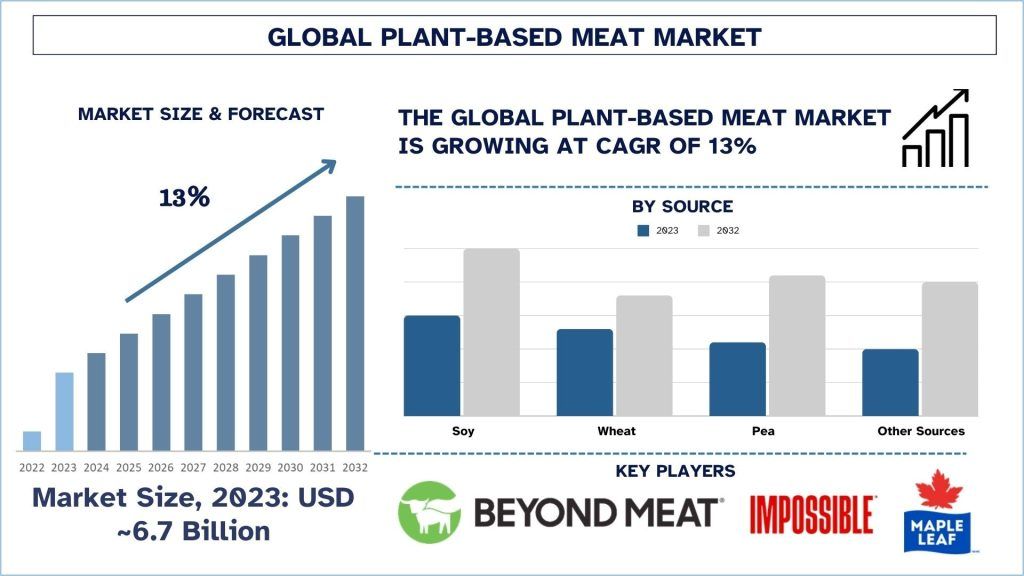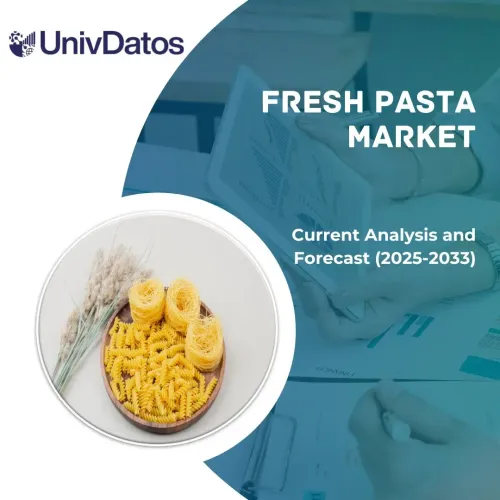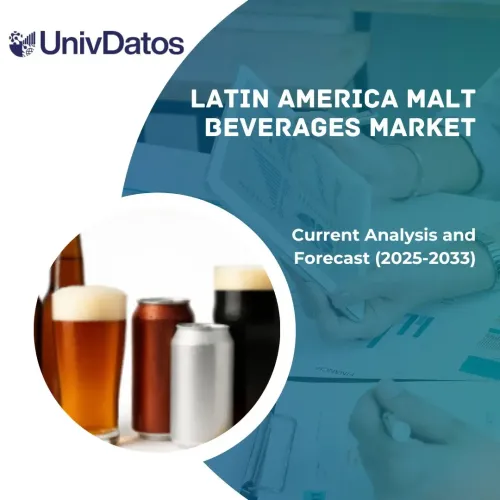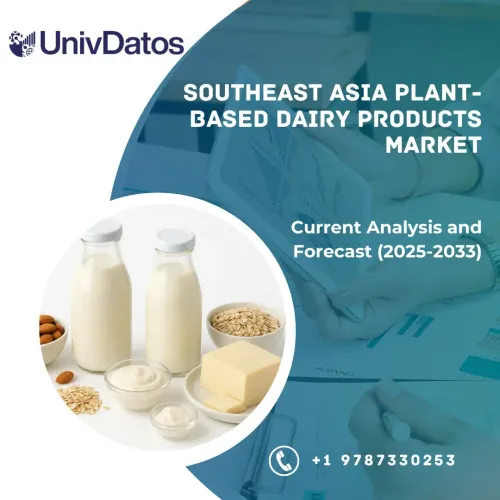- Home
- About Us
- Industry
- Services
- Reading
- Contact Us
Plant-Based Meat Market: Current Analysis and Forecast (2024-2032)
Emphasis on Source (Soy, Wheat, Pea, Other Sources); Product (Burger patties, Strips & nuggets, Sausages, Meatballs, Other Products); Type (Beef, Chicken, Pork, Other (Seafood)); Region and Country
Plant-Based Meat Market Size & Forecast
The Plant-Based Meat market was valued at approximately USD 6.7 billion in 2023 and is expected to grow at a substantial CAGR of around 13% during the forecast period (2024-2032) owing to the rising consumer demand for sustainable food options.
Plant-Based Meat Market Analysis
Plant-based meat refers to soy meat or veggie meat are products that are made to resemble regular meat products in terms of taste, texture, and even appearance but are made solely from plant products. These products usually employ proteins procured from peas, soy, wheat, and fungi among other sources. These meat substitutes are made to give consumers a feel of their usual meat products but without posing a threat to the environment and animals as a source of proteins. The plant-based meats come in different forms and can be in burgers, chicken, or even sausage form.
This sector is due to growing concern about the effects of livestock farming on the environment including emissions of greenhouse gases, deforestation, and water consumption which has led to increased consumption of sustainable foods. The global and regional agri-food corporations are exploring Plant-based product portfolios and new plant-based business models are emerging globally. Hence this shift towards plant protein could lower the impact of the food industry on the environment, promote improved health through better nutrition, and establish a new type of super-premium food category. In addition, changes in the technology of food processing, fermentation, and better sources of proteins have enhanced the palatability of plant-based meats to make them appealing to those who prefer meat. For instance, on September 28, 2023. Novozymes marked an important milestone in the evolution of plant-based meat innovation with the launch of Vertera ProBite, a solution set to advance the plant-based meat industry by changing the need for manufacturers’ use of unwanted texturizers to a natural alternative. Developed by global solutions provider, Novozymes, Vertera ProBite will address and resolve the primary consumer concerns of texture and long ingredient lists and encourage more individuals to make the switch from traditional meat to plant-based alternatives.
Plant-Based Meat Market Trends
This section discusses the key market trends influencing the various segments of the plant-based meat market as identified by our research experts.
Soy Segment Transforms Plant-Based Meat Industry
Soy is the most critical segment in the plant-based meat industry because of its rich protein quality, flexibility in use, and texture like animal meat. Soy-based meat substitute products are incorporated in burgers, sausages, and deli slices for flexitarians and vegetarian consumers who have not fully changed their perception of meat and desire its taste and texture. The ability to produce and purchase soy protein is also cheaper and easily accessible and thus has been incorporated into common plant-based meat products. Moreover, soy has all essential and non-essential amino acids that put it in a position of being equal to animal protein from the nutritional point of view, and therefore, more acceptable. High consumption of soy in food production has been in existence for a long time, giving consumers a safe reference point as the plant-based meat market picks up.
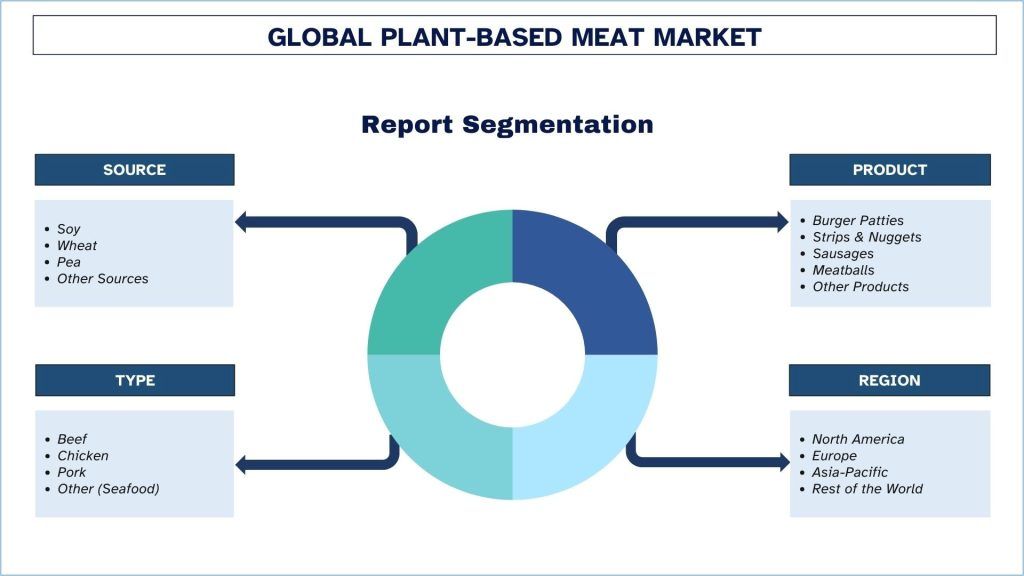
North America leads the market.
North America reigns over the plant-based meat market owing to the large populace, rising awareness towards health and well-being, and a renewed emphasis on the conservation of the environment. The growth in the food segment in the region’s market has been relatively fast in embracing plant-based products in the market with the incorporation of meatless foods by leading fast-food chain sellers and retail dealers. Adding to this is the increasing flexitarian market in North America where a significant percentage of the population is looking to decrease its meat intake due to health and ecological concerns. For instance, on January 23, 2023, Final Foods Inc., a natural food and technology startup, announced the launch of its first product line of plant-based, protein-rich, vegan meat alternative products. Further, capital expenditure on the food industry and technological advancements in the sector, especially in the U.S. has produced high-end plant-based meat products that are marketable. In the region, favorable regulations and enhanced advertising also drive the market’s growth.
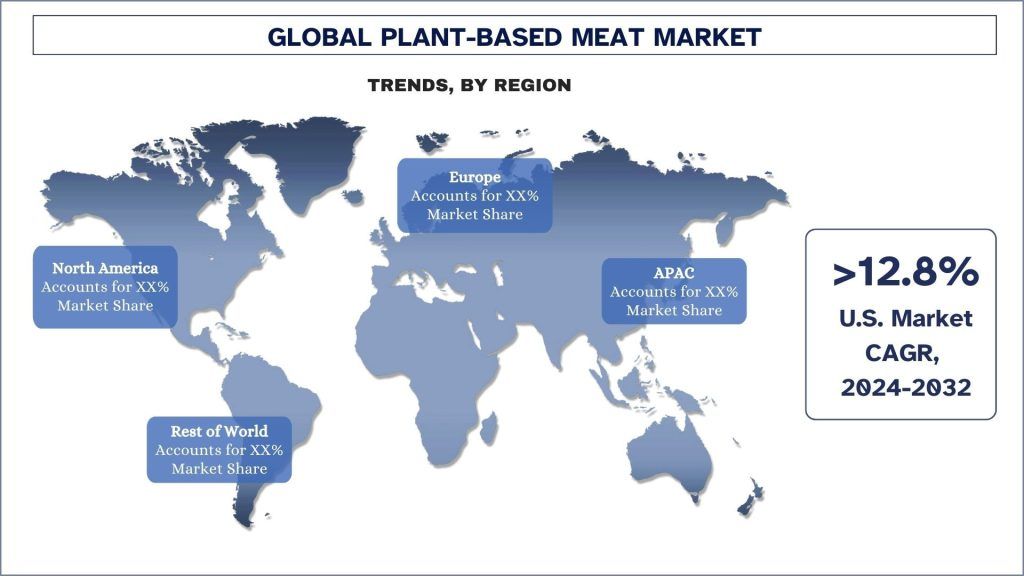
Plant-Based Meat Industry Overview
The Plant-Based Meat market is competitive, with several global and international players. The key players are adopting different growth strategies to enhance their market presence, such as partnerships, agreements, collaborations, new product launches, geographical expansions, and mergers and acquisitions. Some of the major players operating in the market are Beyond Meat Inc., Impossible, Maple Leaf Foods, Tofurky, The Vegetarian Butcher (Unilever), Kellanova (Mars, Incorporated and its Affiliates), Vbites, LightLife Foods Inc., Meatless Farm, Oumph!.
Plant-Based Meat Market News
- In September 2024, Novameat, a Barcelona-based sustainable food technology company, announced that it had raised USD 19.2 million in a Series A funding round to scale its production capacity for its patented bioprinted technology and soy-free alternative meat products among which its new Shredded Nova-b*ef.
- On October 24, 2022 – Beyond Meat, Inc., a leader in plant-based meat, announced the launch of Beyond SteakTM, an innovation designed to deliver the juicy, tender, and delicious bite of seared steak tips with the added nutritional and environmental benefits of plant-based meat. Beyond Steak is launching at Kroger and Walmart stores nationwide, as well as at select Albertsons and Ahold divisions and other retailers across the country.
Plant-Based Meat Market Report Coverage

Reasons to buy this report:
- The study includes market sizing and forecasting analysis validated by authenticated key industry experts.
- The report presents a quick review of overall industry performance at one glance.
- The report covers an in-depth analysis of prominent industry peers with a primary focus on key business financials, product portfolios, expansion strategies, and recent developments.
- Detailed examination of drivers, restraints, key trends, and opportunities prevailing in the industry.
- The study comprehensively covers the market across different segments.
- Deep dive regional level analysis of the industry.
Customization Options:
The global Plant-Based Meat market can be customized further as per the requirement or any other market segment. Besides this, UMI understands that you may have your own business needs, hence feel free to connect with us to get a report that completely suits your requirements.
Table of Content
Research Methodology for the Plant-Based Meat Market Analysis (2022-2032)
Analyzing the historical market, estimating the current market, and forecasting the future market of the global Plant-Based Meat market were the three major steps undertaken to create and analyze the adoption of Plant-Based Meat in major regions globally. Exhaustive secondary research was conducted to collect the historical market numbers and estimate the current market size. Secondly, to validate these insights, numerous findings and assumptions were taken into consideration. Moreover, exhaustive primary interviews were also conducted, with industry experts across the value chain of the global Plant-Based Meat market. Post assumption and validation of market numbers through primary interviews, we employed a top-down/bottom-up approach to forecasting the complete market size. Thereafter, market breakdown and data triangulation methods were adopted to estimate and analyze the market size of segments and sub-segments of the industry. Detailed methodology is explained below:
Analysis of Historical Market Size
Step 1: In-Depth Study of Secondary Sources:
A detailed secondary study was conducted to obtain the historical market size of the Plant-Based Meat market through company internal sources such as annual reports & financial statements, performance presentations, press releases, etc., and external sources including journals, news & articles, government publications, competitor publications, sector reports, third-party database, and other credible publications.
Step 2: Market Segmentation:
After obtaining the historical market size of the Plant-Based Meat market, we conducted a detailed secondary analysis to gather historical market insights and share for different segments & sub-segments for major regions. Major segments are included in the report as product type, sales channel, and regions. Further country-level analyses were conducted to evaluate the overall adoption of testing models in that region.
Step 3: Factor Analysis:
After acquiring the historical market size of different segments and sub-segments, we conducted a detailed factor analysis to estimate the current market size of the Plant-Based Meat market. Further, we conducted factor analysis using dependent and independent variables such as product type, sales channel, and regions of the Plant-Based Meat market. A thorough analysis was conducted for demand and supply-side scenarios considering top partnerships, mergers and acquisitions, business expansion, and product launches in the Plant-Based Meat market sector across the globe.
Current Market Size Estimate & Forecast
Current Market Sizing: Based on actionable insights from the above 3 steps, we arrived at the current market size, key players in the global Plant-Based Meat market, and market shares of the segments. All the required percentage shares split and market breakdowns were determined using the above-mentioned secondary approach and were verified through primary interviews.
Estimation & Forecasting: For market estimation and forecast, weights were assigned to different factors including drivers & trends, restraints, and opportunities available for the stakeholders. After analyzing these factors, relevant forecasting techniques i.e., the top-down/bottom-up approach were applied to arrive at the market forecast for 2032 for different segments and sub-segments across the major markets globally. The research methodology adopted to estimate the market size encompasses:
- The industry’s market size, in terms of revenue (USD) and the adoption rate of the Plant-Based Meat market across the major markets domestically
- All percentage shares, splits, and breakdowns of market segments and sub-segments
- Key players in the global Plant-Based Meat market in terms of products offered. Also, the growth strategies adopted by these players to compete in the fast-growing market
Market Size and Share Validation
Primary Research: In-depth interviews were conducted with the Key Opinion Leaders (KOLs) including Top Level Executives (CXO/VPs, Sales Head, Marketing Head, Operational Head, Regional Head, Country Head, etc.) across major regions. Primary research findings were then summarized, and statistical analysis was performed to prove the stated hypothesis. Inputs from primary research were consolidated with secondary findings, hence turning information into actionable insights.
Split of Primary Participants in Different Regions

Market Engineering
The data triangulation technique was employed to complete the overall market estimation and to arrive at precise statistical numbers for each segment and sub-segment of the global Plant-Based Meat market. Data was split into several segments and sub-segments after studying various parameters and trends in the product type, sales channel, and regions of the global Plant-Based Meat market.
The main objective of the Global Plant-Based Meat Market Study
The current & future market trends of the global Plant-Based Meat market were pinpointed in the study. Investors can gain strategic insights to base their discretion for investments on the qualitative and quantitative analysis performed in the study. Current and future market trends determined the overall attractiveness of the market at a regional level, providing a platform for the industrial participant to exploit the untapped market to benefit from a first-mover advantage. Other quantitative goals of the studies include:
- Analyze the current and forecast market size of the Plant-Based Meat market in terms of value (USD). Also, analyze the current and forecast market size of different segments and sub-segments.
- Segments in the study include areas of the product type, sales channel, and regions.
- Define and analyze the regulatory framework for the Plant-Based Meat
- Analyze the value chain involved with the presence of various intermediaries, along with analyzing customer and competitor behaviors of the industry.
- Analyze the current and forecast market size of the Plant-Based Meat market for the major region.
- Major countries of regions studied in the report include Asia Pacific, Europe, North America, and the Rest of the World
- Company profiles of the Plant-Based Meat market and the growth strategies adopted by the market players to sustain the fast-growing market.
- Deep dive regional level analysis of the industry
Frequently Asked Questions FAQs
Q1: What is the Plant-Based Meat market's current size and growth potential?
Q2: What are the driving factors for the growth of the Plant-Based Meat market?
Q3: Which segment has the largest share of the Plant-Based Meat market by source?
Q4: What are the major trends in the Plant-Based Meat market?
Q5: Which region will dominate the Plant-Based Meat market?
Related Reports
Customers who bought this item also bought

